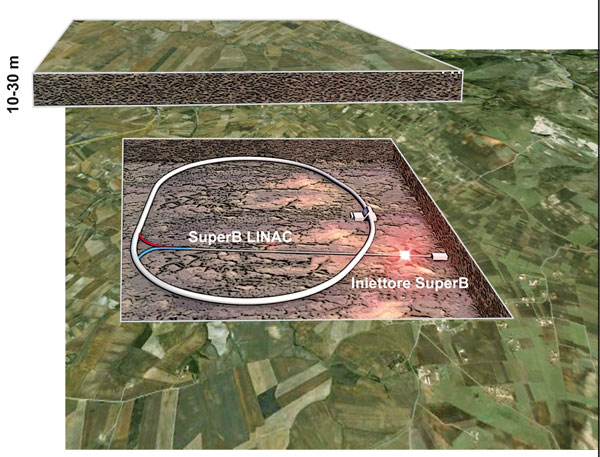The Italian Government Funds the Super-B Accelerator
The Ministry for Education, University and Research has decided to select the SuperB project conducted by the Italian National Institute of Nuclear Physics (INFN) as one of its "flagship projects" in Italy over
 |
|
Schematic representation of SuperB accelerator (pic from INFN website) |
The SuperB project basic assumption is that particle accelerators, smaller than the current "giants", operated at a low energy, can allow excellent scientific results complementary to the high energy frontier.
The crucial element consists in getting particle beams, which are extremely compact, small, short and very dense to collide. SuperB is thus expected to increase by one hundred times compared to the current limit the number of reactions produced in the same unit of time in the laboratory. In this way, through the study of very rare processes, which cause the decay of particles that are already known, it should be possible to account for minute effects not mentioned in the theories.
The quantum leap by SuperB is based on ideas developed in Italy and tested by the accelerator division of the National Laboratories of INFN in Frascati using the machine called Dafne. More specifically, the intersection of the beams at an angle is one of the strengths of the project because it allows a set of particles to follow exactly the same path as those moving in the opposite direction.
The experiments and simulations conducted so far show that SuperB will be able to meet the demands of physics and to produce 1000 pairs of B mesons, the same number of lepton τ pairs, and several thousands of D mesons for every second of its full-power operation.
SuperB is expected to have a technological impact in terms of:
?Biology
?Chemistry and the environment
?Microelectronics
?Diagnostics and medical applications
?Innovative materials
?Nanotechnologies
?Cultural heritage
Source: INFN Website